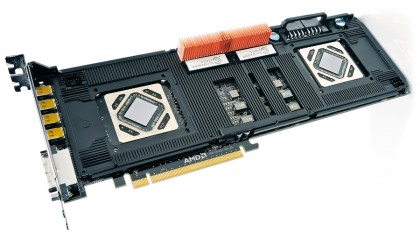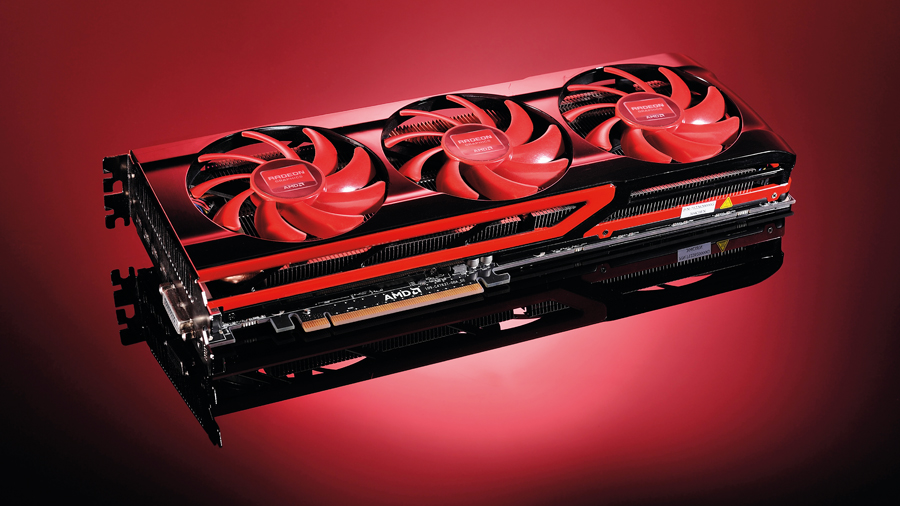Why you can trust TechRadar
Anti-utilitarianism?
For all Nekechuk's talk about not going after the somewhat utilitarian concept of speed at all costs, AMD has included some serious hardware at the heart of this new card.

As you would expect from its partners' existing HD 7990 designs, there's a pair of Tahiti XT GPUs burning away below those chunky heatsinks, and AMD has apparently been hoarding the fastest chips off the production line for its baby. "[We've been] putting aside the best of the best HD 7900 series parts and saving them for the HD 7990s," said Nekechuk. "So these are the lowest power parts - these are the fastest parts."
And these parts are given a base clock of 950MHz, though with the extra boost AMD has created, aping Nvidia's GPU Boost, they generally knock around the 1GHz mark in most tests. There's also a healthy 6GB chunk of GDDR5 memory split between the GPUs to make up the card's framebuffer.
The VRAM clocks in at 6Gbps, as has become standard with high-end graphics memory. AMD reckons that gives them over 500GB/s of bandwidth for shunting data between the GPUs, "to really cope with those ultra high-resolution, ultra-high framebuffers."
To keep the GPUs talking clearly, AMD has also jammed in the latest PLX PCIe chip into the card, which offers some 48 lanes of PCIe traffic. That gives the card almost 100GB/s of inter-GPU bandwidth, perfect when they're talking with each other or communicating outside to the system bus. And when you're jamming in a pair of the fastest cores AMD can manufacture, you're going to have to think pretty darned hard about the cooling of this multi-GPU card.
Thankfully, that's something AMD has spent a good chunk of time on, and that's mostly down to the impressive engineering Nvidia put into the GTX Titan. "Nvidia - I wont do this very often - I'll give them credit on the Titan: they made a quiet card," said Nekechuk. "But that just gave me a target. I'm not going to sit idle - I'm going to look at that Titan and say: 'They did a good job. I can do better.'"
And AMD has done a very good job. On our test rig, the water pump in the closed-loop CPU cooler was making all the noise - even when we had the GPUs at 100 per cent load.
I have to say, it doesn't look like much on the surface. There are three shallow fans spinning atop a mass of copper piping and aluminium heatsinks. But the HD 7990 resolutely sticks around the 80ºC mark when it's being really pushed, and even then it stays incredibly quiet.
It's by no means silent, but AMD has spent time working on the tone of the sound it produces when the fans are spun all the way up. You can hear it (when the water pump shuts up), but the gentle rush of air has none of the whine or harshness that you get from standard HD 7970 GHz cards or even the GTX 690.
AMD has also managed to keep the impressive cooling down to a dual-slot array, smaller than the triple-slot beasts we've already seen.
